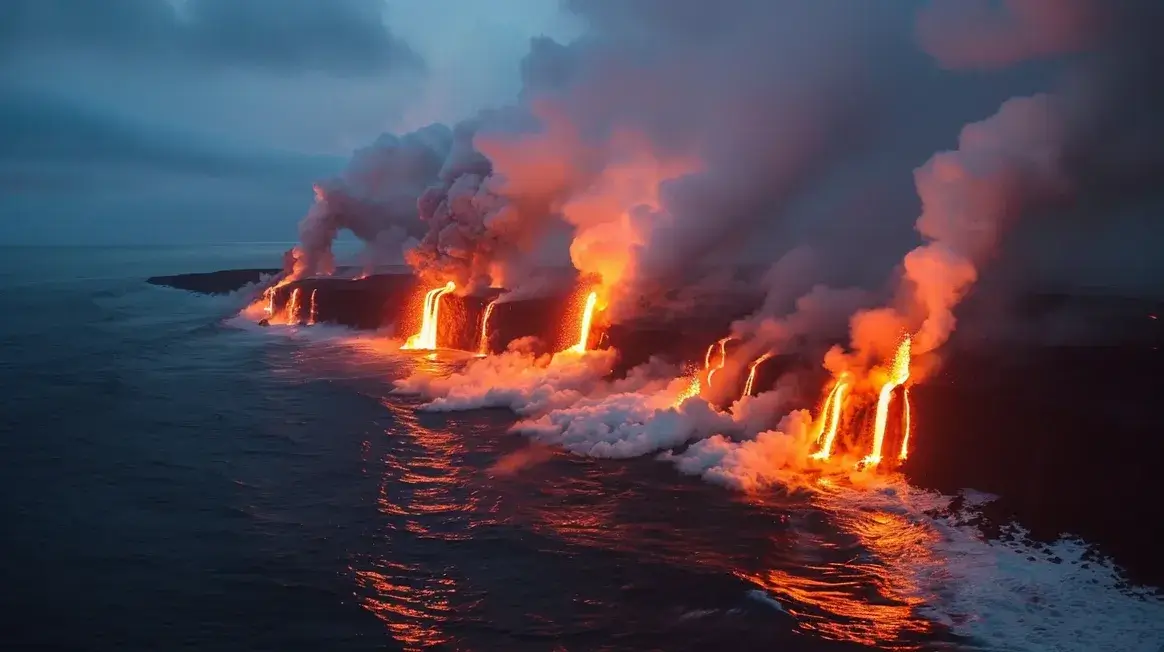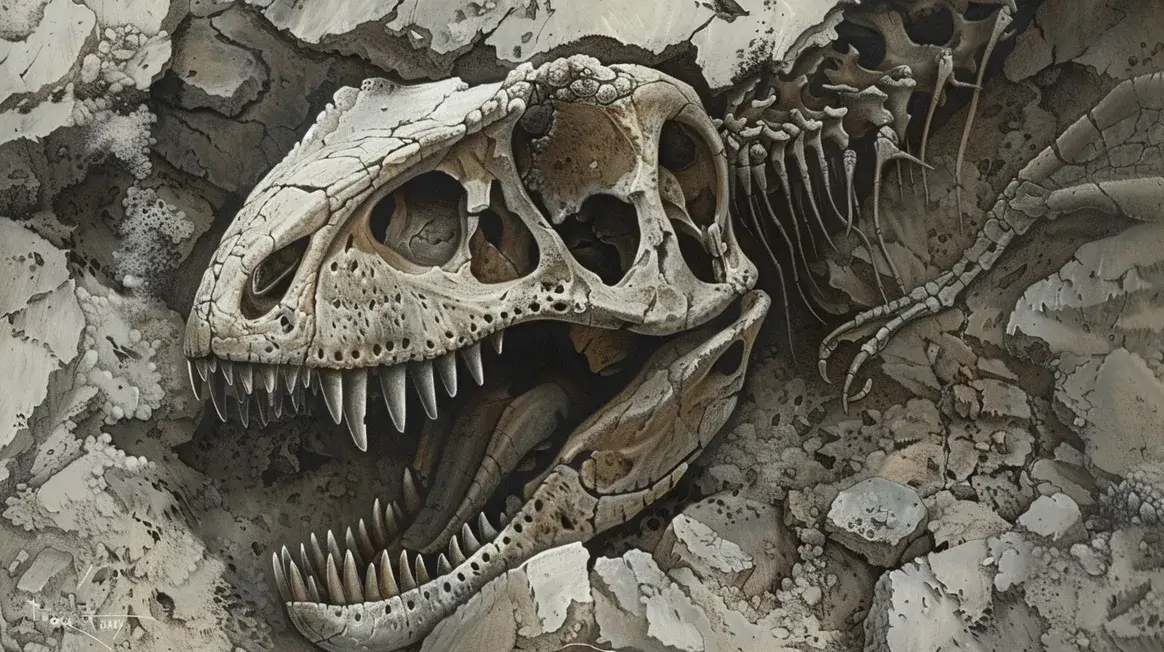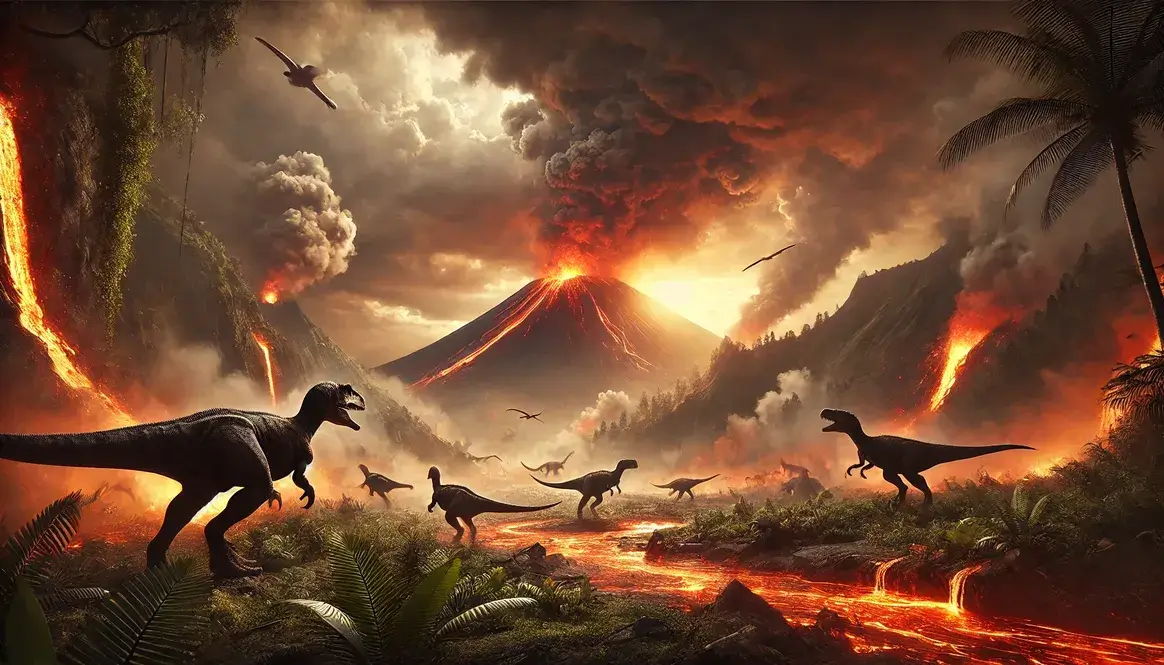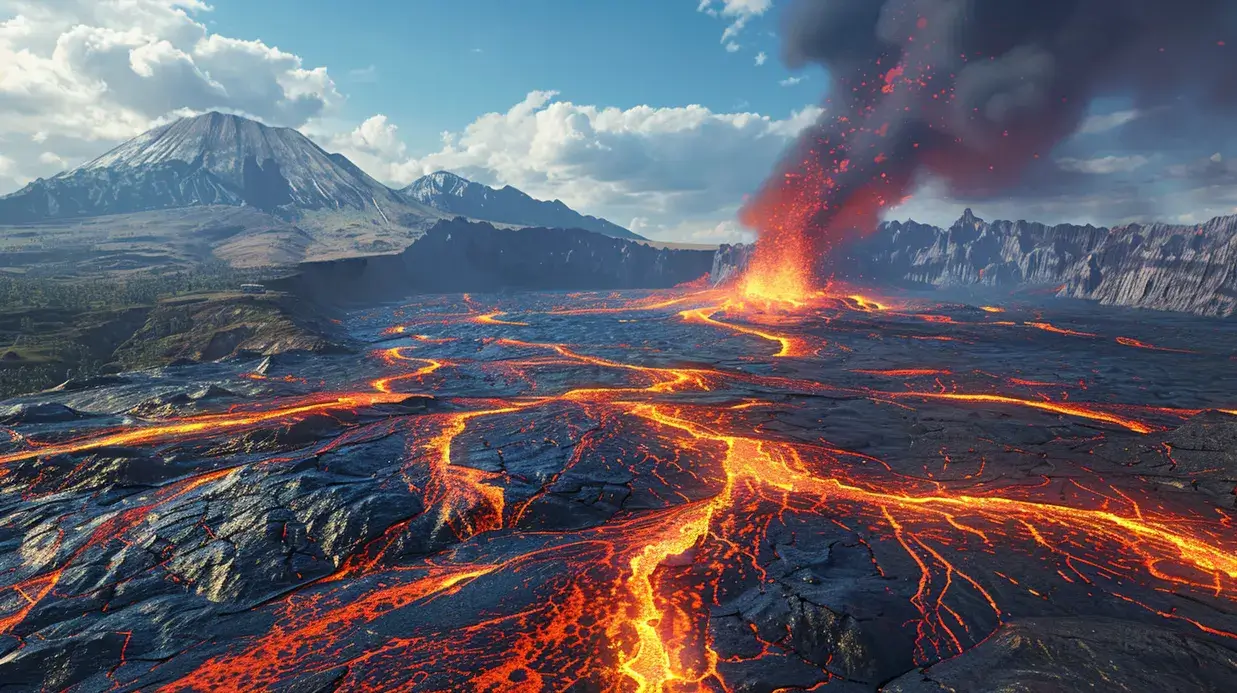Did you know that fiery volcanoes can change the chemistry of our vast oceans? It’s true! Volcanoes and ocean acidity are closely linked in ways that might surprise you. Let’s dive into this fascinating connection between land and sea.
| Key Takeaways: Volcanoes and Ocean Acidity |
|---|
| 1. Volcanoes release acidic compounds into oceans |
| 2. Underwater eruptions directly affect sea chemistry |
| 3. Land volcanoes impact oceans through air emissions |
| 4. Volcanic activity can lead to rapid ocean acidification |
| 5. Both past and present eruptions influence ocean pH |
The Fiery Origins of Ocean Change
Imagine a world where fire and water collide. That’s exactly what happens when volcanoes interact with our oceans. Volcanoes, both on land and under the sea, release substances that can make the ocean more acidic. This process has been happening for millions of years, shaping the seas we know today.
When volcanoes erupt, they don’t just spew out hot lava. They also release gases and other materials that can travel far and wide. Some of these substances end up in the ocean, where they cause chemical changes. These changes can affect everything from tiny plankton to massive whales.
Volcanoes and Ocean Acidity: A Surprising Connection
The link between volcanoes and ocean acidity might not be obvious at first glance. After all, how can something on land affect water far away? But nature has a way of connecting things we might not expect.
Volcanoes release large amounts of carbon dioxide and other gases. When these gases mix with seawater, they form acids. This process makes the ocean more acidic, which can be harmful to many sea creatures. It’s like adding too much lemon juice to a glass of water – it changes the taste and can affect what lives in it.
Underwater Eruptions: Direct Acid Injections
Not all volcanoes are on land. Many are hidden beneath the waves, and these underwater volcanoes have an even more direct effect on ocean acidity.
When submarine volcanoes erupt, they release hot, acidic fluids directly into the surrounding water. This is like adding a drop of strong vinegar to a small pool. The area around the volcano quickly becomes more acidic. Sea creatures living nearby must either adapt or move to survive.
These underwater eruptions can create “hot spots” of acidity in the ocean. Scientists study these areas to understand how sea life responds to rapid changes in water chemistry. It’s like a natural laboratory for studying the effects of ocean acidification.
Atmospheric Emissions: The Long-Distance Effect
Land volcanoes might seem far from the ocean, but they too play a role in changing sea chemistry. When these volcanoes erupt, they send gases high into the atmosphere. These gases, especially carbon dioxide, can travel great distances before falling back to Earth.
Much of this volcanic gas eventually ends up in the ocean. As it dissolves in seawater, it forms carbonic acid. Over time, this process can make large areas of the ocean more acidic. It’s a bit like how acid rain forms, but on a much larger scale.
This long-distance effect means that even volcanoes far from the coast can impact ocean acidity. A single large eruption can release enough gas to affect ocean chemistry for months or even years.
Understanding this connection helps scientists predict how future volcanic activity might impact our oceans. It also provides clues about how volcanoes change climate over long periods.
The Chemistry of Volcanic Ocean Acidification
When volcanoes and oceans meet, a complex chemical dance begins. This interaction changes the very nature of seawater, making it more acidic. Let’s break down this process to understand how volcanoes turn our blue seas into a chemical soup.
Carbon Dioxide: The Main Culprit
Carbon dioxide (CO2) is the star player in volcanic ocean acidification. Here’s how it works:
- Volcanoes release large amounts of CO2 into the air or water.
- This CO2 dissolves in seawater, just like bubbles in a fizzy drink.
- As it dissolves, it forms carbonic acid (H2CO3).
- Carbonic acid then splits into hydrogen ions (H+) and bicarbonate ions (HCO3-).
- The increase in hydrogen ions makes the water more acidic.
This process is similar to how volcanoes affect evolution by changing environments over time. The more CO2 a volcano releases, the more acidic the surrounding water becomes.
Sulfur and Halogens: Additional Acid Sources
While CO2 is the main troublemaker, it’s not the only one. Volcanoes also release other gases that contribute to ocean acidification:
Sulfur Dioxide (SO2): When SO2 meets water, it forms sulfurous acid (H2SO3). This acid is stronger than carbonic acid and can cause rapid local acidification.
Hydrogen Chloride (HCl) and Hydrogen Fluoride (HF): These gases form hydrochloric and hydrofluoric acids in water. They’re especially common in underwater eruptions.
| Volcanic Gas | Acid Formed | Strength |
|---|---|---|
| CO2 | Carbonic | Weak |
| SO2 | Sulfurous | Moderate |
| HCl | Hydrochloric | Strong |
| HF | Hydrofluoric | Very Strong |
These additional acids can create “hot spots” of extreme acidity near volcanic vents. Scientists study these areas to understand how sea life might respond to future ocean acidification.
The mix of acids from volcanoes can vary. For example, the Deccan Traps eruptions released different combinations of gases over time, potentially causing varying effects on ancient oceans.
Understanding these chemical processes helps us predict how future volcanic activity might impact our oceans. It also provides clues about past extinction events and how they might have been linked to massive volcanic eruptions.
Impacts on Marine Life: A Ripple Effect
When oceans become more acidic due to volcanic activity, it’s not just the water that changes. The effects ripple through the entire marine ecosystem, affecting countless creatures from the tiniest plankton to the largest whales.
Shell-Forming Creatures Under Threat
Many sea creatures build shells or skeletons using calcium carbonate. In more acidic water, this becomes much harder to do. It’s like trying to build a sandcastle with dry sand – it just doesn’t work as well.
Some of the animals most affected include:
- Corals
- Clams and oysters
- Sea urchins
- Some types of plankton
These creatures may grow slower, have thinner shells, or struggle to survive at all in more acidic waters. This can have far-reaching consequences for the entire ocean ecosystem.
Coral Reefs: Underwater Cities at Risk
Coral reefs are like bustling underwater cities, home to countless marine species. But these cities are under threat from ocean acidification.
Corals build their structures using calcium carbonate, just like many shell-forming animals. As the ocean becomes more acidic, corals have to work harder to build and maintain their structures. This leaves them with less energy for other important tasks like reproducing and fighting off diseases.
If corals can’t keep up with the changing ocean chemistry, entire reef ecosystems could collapse. This would be devastating not only for the creatures that call reefs home but also for humans who rely on reefs for food, coastal protection, and tourism.
Food Web Disruption: From Plankton to Predators
The effects of ocean acidification don’t stop with shell-forming creatures. The entire marine food web can be disrupted, creating a domino effect that reaches all the way up to top predators.
Here’s how it might play out:
- Acidification harms tiny plankton at the base of the food chain.
- Fish that eat plankton have less food and may decline in numbers.
- Larger fish and marine mammals that eat these smaller fish then struggle to find enough food.
- Top predators like sharks may face food shortages as their prey becomes scarce.
This cascade of effects shows how volcanoes at end of Cretaceous could have contributed to widespread changes in marine ecosystems, potentially playing a role in the extinction of marine reptiles and other sea creatures.
| Trophic Level | Examples | Potential Impact of Acidification |
|---|---|---|
| Primary Producers | Phytoplankton | Reduced growth and survival |
| Primary Consumers | Zooplankton, small fish | Less food available |
| Secondary Consumers | Larger fish | Declining prey populations |
| Top Predators | Sharks, marine mammals | Food web disruption |
Understanding these complex interactions helps scientists predict how future volcanic activity and resulting ocean acidification might affect marine life. It also provides insights into past extinction events and how they may have unfolded in the oceans of prehistoric Earth.
Clues from the Past: The Geological Record Speaks
Earth’s history is like a giant storybook, and geologists are the detectives who read its pages. By studying rocks and fossils, scientists have uncovered evidence of past volcanic events that caused massive ocean acidification. These ancient episodes provide valuable insights into how volcanoes can impact our oceans and the life within them.
The End-Permian Extinction: A Cautionary Tale
About 252 million years ago, Earth experienced its most severe extinction event, known as the “Great Dying.” During this time, up to 96% of marine species disappeared. But what caused this catastrophic event?
Evidence points to massive volcanic eruptions in what is now Siberia. These eruptions, known as the Siberian Traps, released enormous amounts of greenhouse gases, including carbon dioxide, into the atmosphere. This led to:
- Rapid global warming
- Severe ocean acidification
- Widespread ocean anoxia (lack of oxygen)
The Deccan Traps effect on ancient life during the end-Cretaceous period shows similarities to this earlier event, highlighting the devastating potential of large-scale volcanism.
Scientists have found evidence of this ancient acidification in the shells of marine organisms from that time. These shells show signs of dissolution and stress, indicating they struggled to grow in the acidic waters.
Paleocene-Eocene Thermal Maximum: Another Acidic Episode
Fast forward to about 56 million years ago, and we encounter another significant period of global warming and ocean acidification: the Paleocene-Eocene Thermal Maximum (PETM).
During the PETM:
- Global temperatures rose by 5-8°C
- Oceans became significantly more acidic
- Many deep-sea organisms went extinct
While the exact cause of the PETM is still debated, volcanic activity is thought to have played a crucial role. The release of massive amounts of carbon into the atmosphere, possibly from extensive volcanic eruptions, led to rapid warming and ocean acidification.
| Event | Time (Million Years Ago) | Volcanic Activity | Ocean Acidification |
|---|---|---|---|
| End-Permian | 252 | Siberian Traps | Severe |
| PETM | 56 | Suspected widespread volcanism | Significant |
| K-Pg Boundary | 66 | Deccan Traps | Moderate to Severe |
These past events serve as natural experiments, helping scientists understand the potential impacts of modern ocean acidification. They remind us that while the Earth has experienced significant changes in the past, the rate of current change is unprecedented in geological history.
By studying these ancient acidification events, researchers can better predict how modern marine ecosystems might respond to increasing ocean acidity. This knowledge is crucial for developing strategies to protect our oceans and the life they support in the face of ongoing climate change and potential future volcanic events.
Modern Parallels: Volcanoes vs. Human Activities
While volcanoes have been changing ocean chemistry for millions of years, humans have become a new force of nature, altering our seas at an unprecedented rate. Let’s compare these two sources of ocean acidification and explore their combined effects on our blue planet.
Rates of Change: Natural vs. Anthropogenic
Volcanic ocean acidification and human-induced acidification differ significantly in their speed and scale:
Volcanic Acidification:
- Usually localized around eruption sites
- Can cause rapid but often short-term changes
- Effects may last for months to years after an eruption
Human-Induced Acidification:
- Global in scale
- Occurring at a much faster rate than natural processes
- Continuous and increasing over time
The Deccan Traps eruptions lasted for thousands of years, gradually changing Earth’s climate and ocean chemistry. In contrast, human activities have caused significant changes in just a few centuries.
Consider this comparison:
| Source | Rate of CO2 Release | Scale of Impact | Duration |
|---|---|---|---|
| Large Volcano | High | Regional | Weeks to Years |
| Human Activities | Moderate but Constant | Global | Decades to Centuries |
This rapid pace of change gives marine life little time to adapt, making human-induced acidification particularly concerning for ocean ecosystems.
Cumulative Effects: When Nature and Humans Combine
Modern volcanic eruptions don’t occur in isolation – they add to the existing human-induced changes in our oceans. This combination can create complex and potentially severe impacts on marine life.
Here’s how volcanic and human activities might interact:
- Baseline Shift: Human activities have already lowered the ocean’s pH. When a volcano erupts, it’s adding acidity to an already more acidic ocean.
- Reduced Buffering Capacity: The ocean’s ability to neutralize acids has been decreased by human-induced acidification, making it more vulnerable to additional acidic inputs from volcanoes.
- Stress Multiplication: Marine organisms already stressed by human-caused changes may be less resilient to sudden volcanic inputs.
- Unpredictable Interactions: The combination of different acidifying sources could lead to unexpected chemical reactions in seawater.
Scientists are working to understand these complex interactions. By studying how volcanoes change climate and ocean chemistry, researchers hope to improve predictions of future ocean conditions.
While we can’t control volcanic eruptions, understanding their effects helps us prepare for potential impacts. More importantly, it underscores the need to address human-caused ocean acidification to give marine ecosystems the best chance of withstanding natural disturbances.
By reducing our carbon emissions and protecting marine habitats, we can help build more resilient oceans that are better equipped to handle both natural and human-induced changes.
Looking Ahead: Volcanic Acidification in Earth’s Future
Volcanoes and ocean acidity will continue to interact in complex ways. As we face climate change, understanding this relationship becomes crucial. By studying past events and current volcanic activity, scientists can better predict future impacts on our oceans. This knowledge is key to protecting marine life and maintaining healthy seas for generations to come.
Remember, while we can’t control volcanoes, we can take steps to reduce human-caused ocean acidification. Every action to cut carbon emissions helps create more resilient oceans, better able to withstand both natural and human-induced changes. The future of our blue planet depends on the choices we make today.









